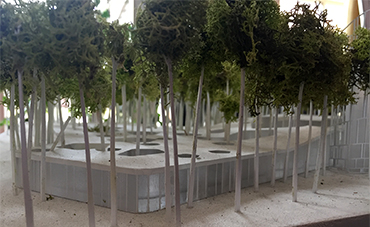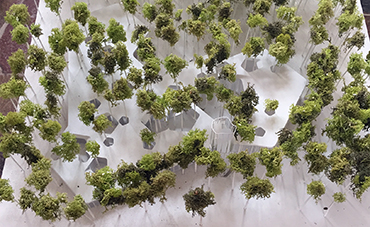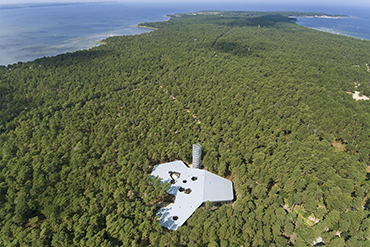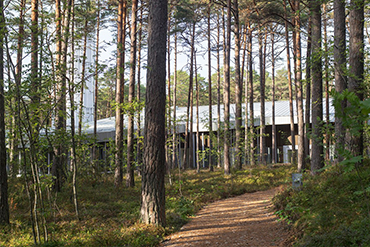18 months ago, i was standing in a forest. It was located on the Lohusalu peninsula, near the village of Laulasmaa on the north-west Estonian coast. This is the site of Aliina, Arvo Pärt’s country retreat, as well as the enormous archive of his scores, sketches and a myriad other materials that have been collected throughout Pärt’s life and which, at the time of my visit, was still being catalogued and organised in a separate building facing Aliina. In addition to this, about 100 metres away into the forest, was a large construction site where diggers and cranes were starting to make preparations for The Arvo Pärt Centre, a hub for the composer’s complete life and work, intended not only to make the archive accessible but also to feature a museum and a concert hall.

While i was there, the winning design for the centre – fittingly named ‘Tabula’, by the Spanish architectural firm Nieto Sobejano – was on display inside Aliina. It was extremely striking: a long, low building with thin verticals that emulated the trees, a vast amount of glass, designed such that the building and the forest were integrated, the trees penetrating through the construction as though it had always been there and the trees had simply grown in and around it. Crowning the design was a tall wireframe tower on the seaward side, providing a vantage point to survey the forest and to look out across the Baltic Sea.
A few weeks ago, i was at the Estonian Embassy in London for the launch of The Arvo Pärt Centre, which officially opens its doors to the world today. At the launch Michael Pärt, the composer’s son (and chairman of the Centre’s Supervisory Board), gave a brief introduction and overview of the building. At 2,348m², in addition to its central archive the Centre boasts a library, a 150-seat concert hall (with a prominent view out into the forest), an exhibition area, a video room and various classrooms. Quite apart from its general aesthetic appeal, one rather lovely architectural touch is the fact that the positioning of those thin verticals i mentioned is determined by the positioning of notes in one of Pärt’s compositions, creating a literal link between the building and the music, the former echoing the latter. It’s clear from the images that we were shown at the Embassy that the integration of the building with its environment makes for a stunning effect. Quite apart from any desires to explore Pärt’s work in more depth, the place itself just looks incredibly inviting (even more so during the winter months, when the outside temperature plummets below freezing). i’ve not yet had a chance to return to Laulasmaa and explore the Centre in person, but having seen the place at its birth, when the timber and concrete were literally lying in wait, it’s great to see the project come to fruition exactly as intended, especially in the year that celebrates the 100th anniversary of Estonia’s independence.
There can’t be that many centres of this kind in the world, dedicated to composers who are still living, and one of the things i spoke with Michael Pärt about was whether this had had any appreciable impact on the way his father composes. Was he conscious of the fact that any sketch or note or doodle he makes while composing now has a likelihood of ending up in the archive? His response was emphatically negative, indicating that Arvo Pärt’s practice has never been to keep these things, but that his wife, Nora, has always had a habit of removing them from the waste bin in order to save them for posterity(!).
Now finally open, the Arvo Pärt Centre can be visited by the general public from Wednesdays to Sundays, 12–6pm, while researchers have access Monday to Friday, 10am–5pm. Tickets costs €4 for adults (€2 concessions) and a family ticket is €8; children under 7 and those with special needs and their companions have free access. All the information you might need about the Centre can be found on their website.







[…] Two years ago, i had stood in this same spot in the forest and looked out over what was then the early stages of a building site. Six months ago i was at the Estonian Embassy in London for the official launch of the Centre, […]